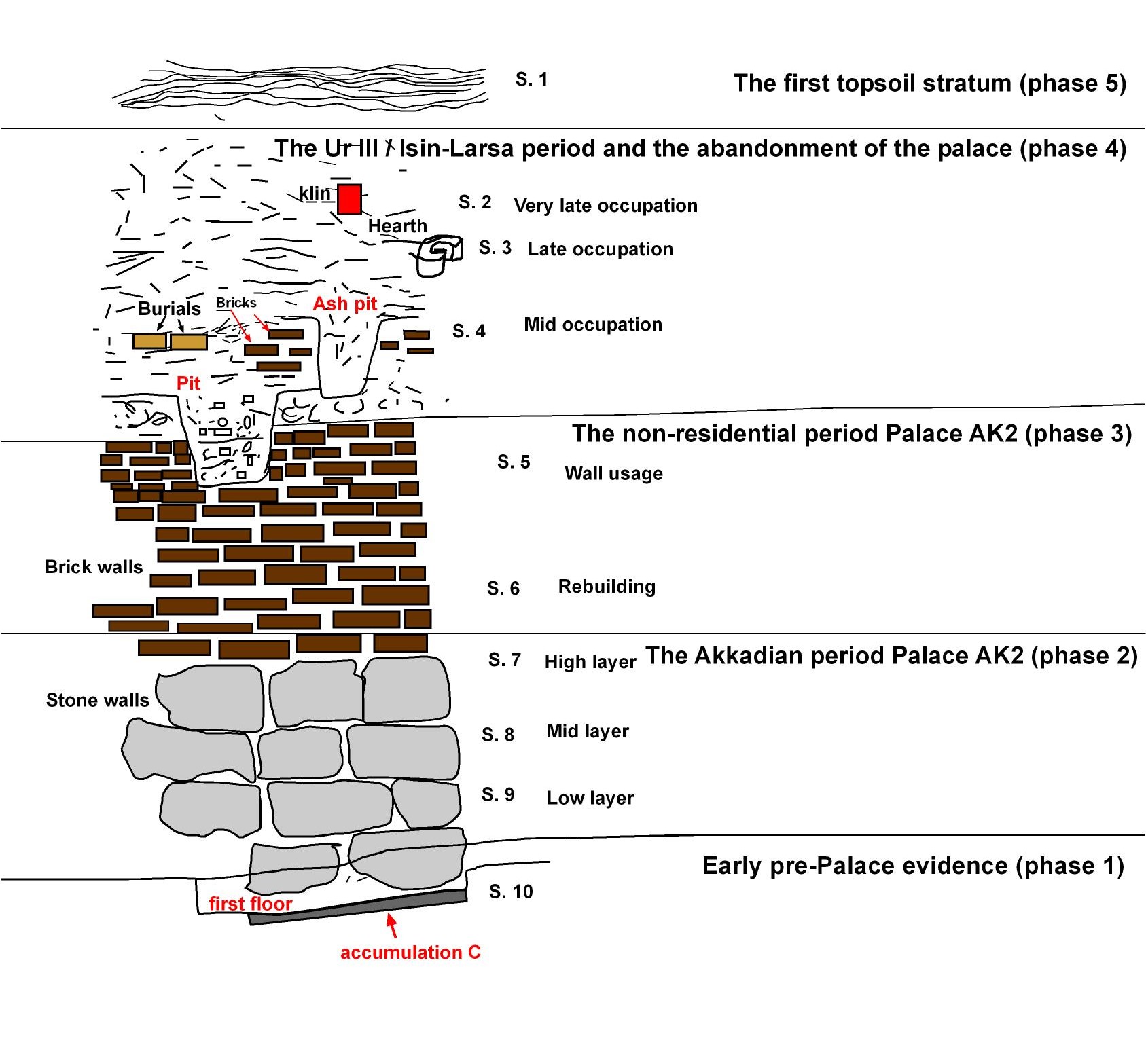Back to top: Depositional history for Unit A6
Introduction
The depositional history of A6 could be examined and understood through two distinct models: the stratigraphic-archaeological model and the Historical model. In this section, we will delve into the unfolding of events that have shaped the development of A6 over time. It is important to note that the following account is based on interpretation and reflects a singular understanding.
The depositional history could be organized following two different models: a stratigraphic-archaeological model and a Historical model. The stratigraphic model presents the history of the area as found in the ground, while the historical model presents the oldest evidence and shows the history of the evidence like in a story.
Back to top: Depositional history for Unit A6
Stage 1 The first topsoil (phase 5)
This phase was identified with the sod layer, wadi accumulation, and ash layer. A few sherds, and bones were collected from this stratum. Although it is a disturbed upper layer, it serves a valuable function of sealing what is beneath it.
Back to top: Depositional history for Unit A6
Stages 2, 3, 4. The Ur III / Isin-Larsa periods and the abandonment of the Palace(Phase 4)
This phase presents only crumbly black accumulations against the upper levels of the walls of the lower stages. containing sherds and large stones. In addition to these materials, one seal impression from this phase contributes to the evidence of living occupation. Although a negative wall was shown, no evidence of floors or other materials in these levels beyond sherds, burials, one hearth, and one seal impression.
Back to top: Depositional history for Unit A6
Stages 5 and 6 The non-residential use of the Palace AK2 (phase3)
The very beginning of Mittani (indicated here in green) is still not clear in J6, since it was not extensively excavated: in this period we have a thick layer of a very wet and organic accumulation, plenty of pottery, charcoal and beads (f151) interrupted by patches of ashes; this layer sits directly on top of Third millennium layers. The rapid growth of sedimentation in this portion of the tell gives indication of a large presence of structures the south and east of the plaza. A surface sloping to the south east (^glacis1) covers the area and a shallow wall f202 is located on top of the glacis, at the same position of wall f227, which slightly later is used as base for the mudbrick bin a7, the last evidence of activities in J6. It was found empty and several use floors are associated to it.
Back to top: Depositional history for Unit A6
Stage 7, 8 and 9. The Akkadian period Palace AK1 (phase 2)
This phase shows an occupation linked to the Akkadian period, the period that was controlled by King Tupkish, what led us to this conclusion is the size and the obvious use of brick walls with stone foundations, where several walls were discovered and formed an important part of the service quarter. The similar bricks in color and size, and a gypsum coating platform, in addition to the existence of tannur reinforced the importance of this unit as an interesting sector of the royal palace. The accumulations of A6 yielded a vast amount of seal impressions and cylinder seals and a similar percentage of a stone “stamp” seal that were exclusively linked to this king, his wife Uqnitum, and their courtiers. In this phase, we can easily identify the unit in the northern part as a kitchen through the discovered installations and three well-preserved rooms that have been observed.
Back to top: Depositional history for Unit A6
Stage 10 Early pre-Palace evidence (Phase 1)
It is obvious that there are earlier strata existing below the AK building, the excavations in the AK building show that the pre-Palace surface sloped rather strongly to the southwest and this led us to think that a substantial leveling had happened in the pre-Palace period. In addition to a small excavation in the A6 that showed evidence of the ED III period, this excavation led to an accumulation underneath the trace of the negative wall and also yielded the first floor associated with the stone walls of the AK1 period..
Back to top: Depositional history for Unit A6
